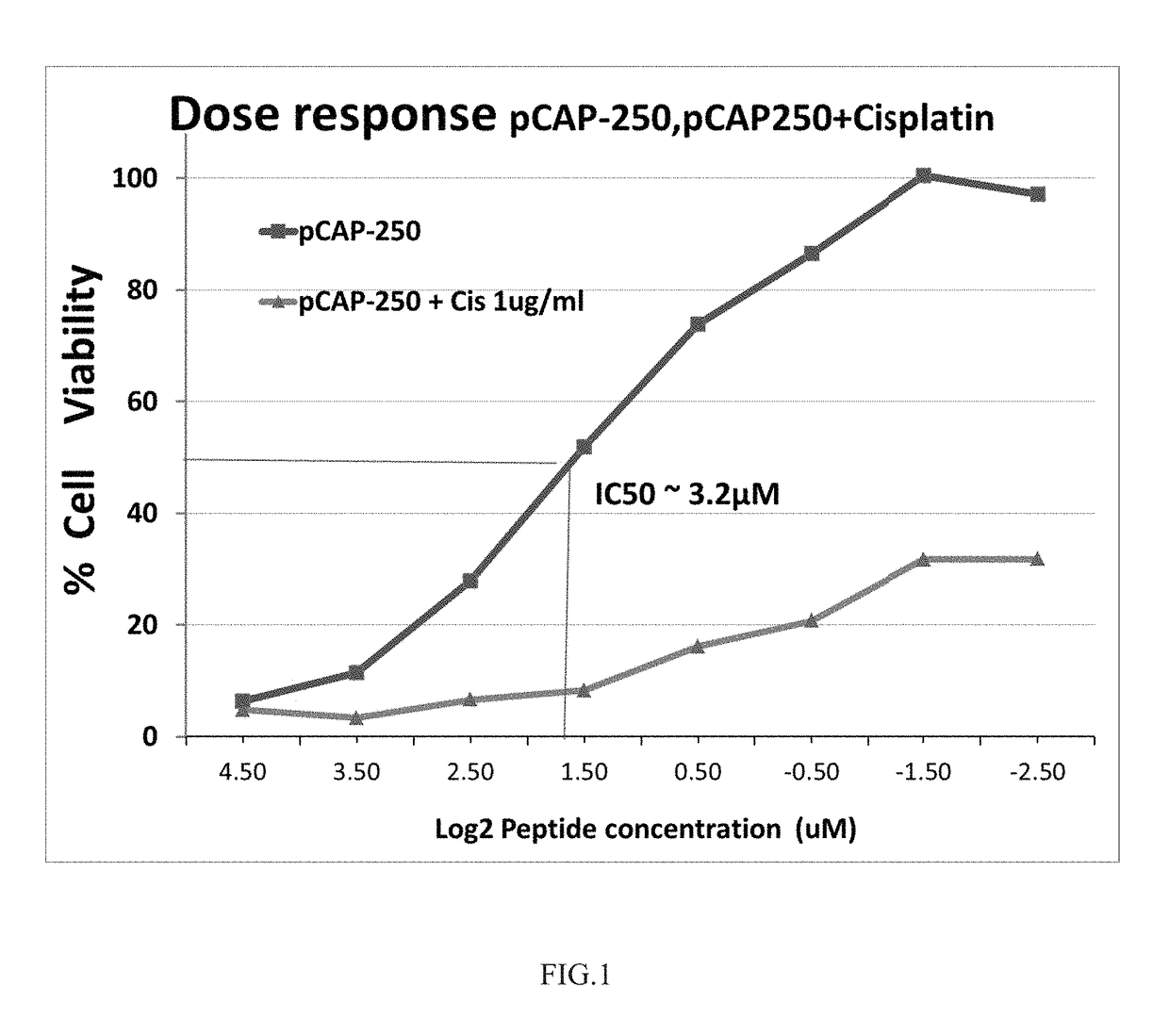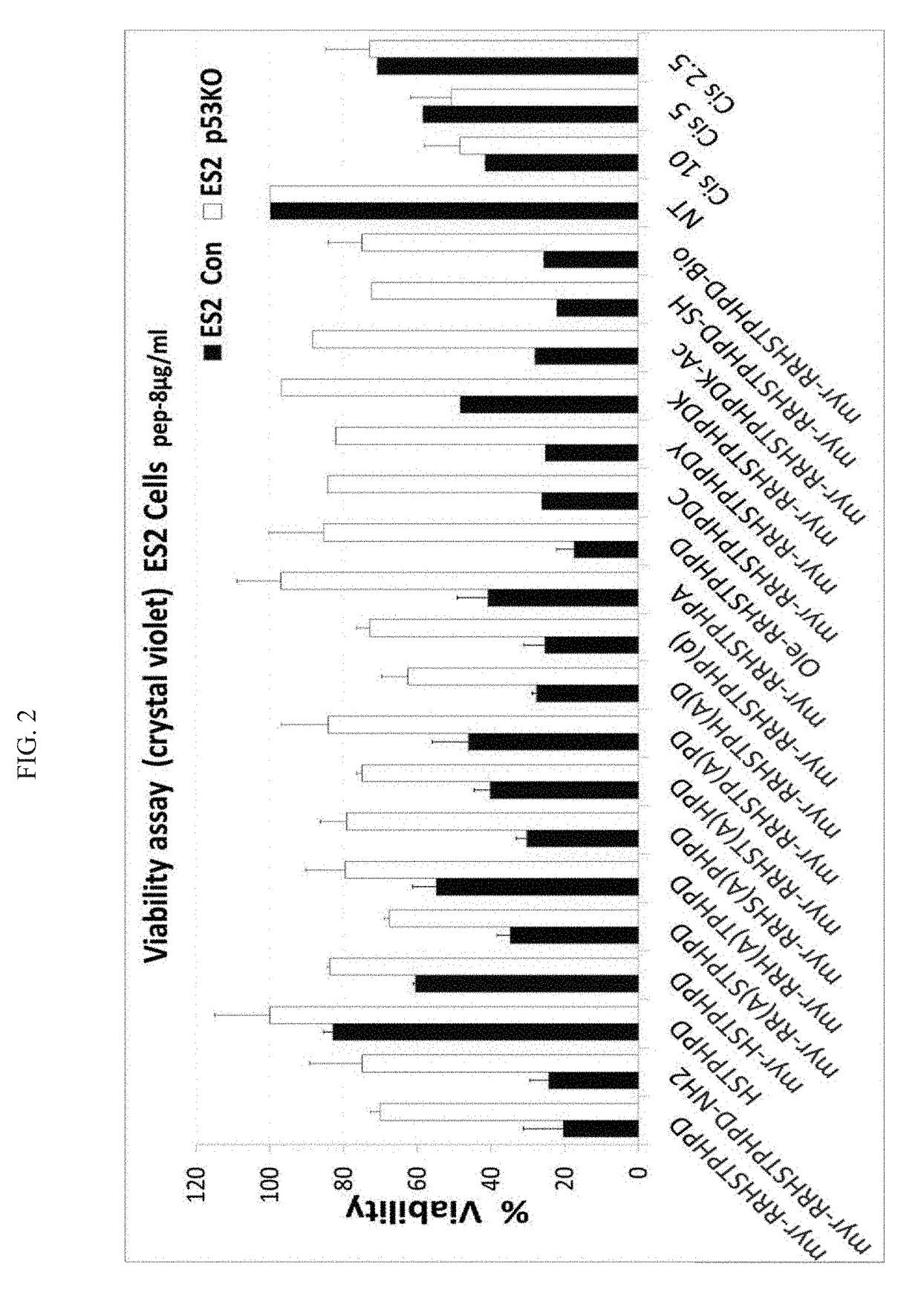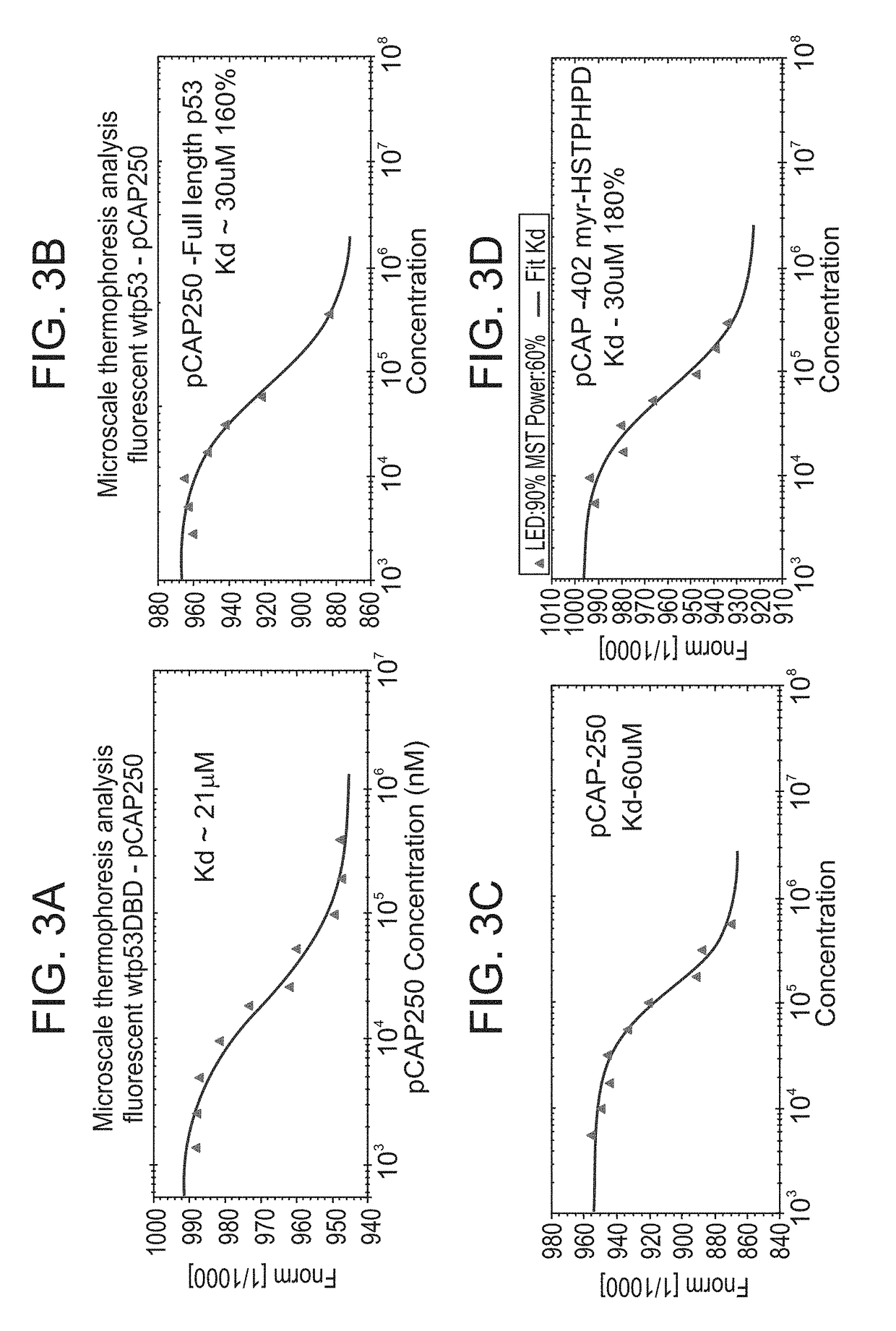Peptides and use of same in the treatment of diseases, disorders or conditions associated with a mutant p53
a technology of p53 and peptides, which is applied in the direction of p53 protein, peptide/protein ingredients, peptide sources, etc., can solve the problems of increasing tumor heterogeneity and the complexity of phage peptide display libraries, and achieve the effect of reducing the viability of cells expressing
- Summary
- Abstract
- Description
- Claims
- Application Information
AI Technical Summary
Benefits of technology
Problems solved by technology
Method used
Image
Examples
example 1
pCAP-250 Synergizes with Cisplatin in Reducing Viability of ES2 Ovarian Cancer Cells
[0280]ES2 Cells were cultured in 96 wells plates with 3000 cells / well. Serial dilutions of pCAP-250 were added either alone or together with 1 μg / ml of cisplatin and the plates incubated for additional 48 h at 37° C. Then medium was removed and cell viability was determined by staining the cells with crystal violet (0.05%) in methanol / PBS (1:5, v / v), for 10 min, followed by 3 washes with PBS. 10% acetic acid was added to each well for 10 min. OD was determined at 595 nm. The viability of ES2 cells treated with 1 μg / ml was 39%. The IC50 for pCAP-250 was estimated at 3.2 μM and in combination with cisplatin the IC50 for pCAP-250 was estimated at 1.9 μM indicating a synergistic effect between the two compounds.
[0281]FIG. 1 shows the results of the experiment. Evidently, the viability of the cancer cells reduced significantly in the presence of pCAP 250. A synergy is envisaged by the combined treatment o...
example 2
Characterizing the Activity of pCAP-250 and Different Derivatives
[0282]Cells, ES2 Con expressing endogenous mp53S241F, and ES2 KO cells in which p53 was stably knocked out using CRISPR / Cas9 (ES2 p53KO), to control for specificity for mutp53 were cultured in 96 wells plates with 3000 cells / well. The indicated peptides were added at a concentration of 8 μg / ml and the plates incubated for additional 48 h at 37° C. Then medium was removed and cell viability was determined by staining the cells with crystal violet (0.05%) in methanol / PBS (1:5, v / v), for 10 min, followed by 3 washes with PBS. 10% acetic acid was added to each well for 10 min. OD was determined at 595 nm.
[0283]FIG. 2 shows the difference in the effect of a particular peptide for ES2 Con compared to ES KO indicates specificity of peptide to mutp53 expression. Several peptide derivatives in which amino acids that were substituted to Alanine (Serine and Histidine for example) showed a decreased effect on ES2 Con cells indicat...
example 3
pCAP 250 Binding to p53 DBD
[0285]FIGS. 3A-K show microscale thermophoresis analysis for the binding of fluorescently labeled WTp53DBD and pCAP-250. Experiment was performed according to manufacturer instructions; 10 serial dilutions of pCAP-250 were prepared, labeled protein was added to each peptide sample and loaded to capillaries. The samples were analyzed for movement of fluorescent wtp53DBD in temperature gradient with different concentrations of pCAP-250. Microscale thermophoresis analysis results are presented as a curve obtained from manufacturer data analysis software.
PUM
| Property | Measurement | Unit |
|---|---|---|
| Fraction | aaaaa | aaaaa |
| Frequency | aaaaa | aaaaa |
| Hydrophobicity | aaaaa | aaaaa |
Abstract
Description
Claims
Application Information
 Login to View More
Login to View More - R&D
- Intellectual Property
- Life Sciences
- Materials
- Tech Scout
- Unparalleled Data Quality
- Higher Quality Content
- 60% Fewer Hallucinations
Browse by: Latest US Patents, China's latest patents, Technical Efficacy Thesaurus, Application Domain, Technology Topic, Popular Technical Reports.
© 2025 PatSnap. All rights reserved.Legal|Privacy policy|Modern Slavery Act Transparency Statement|Sitemap|About US| Contact US: help@patsnap.com



